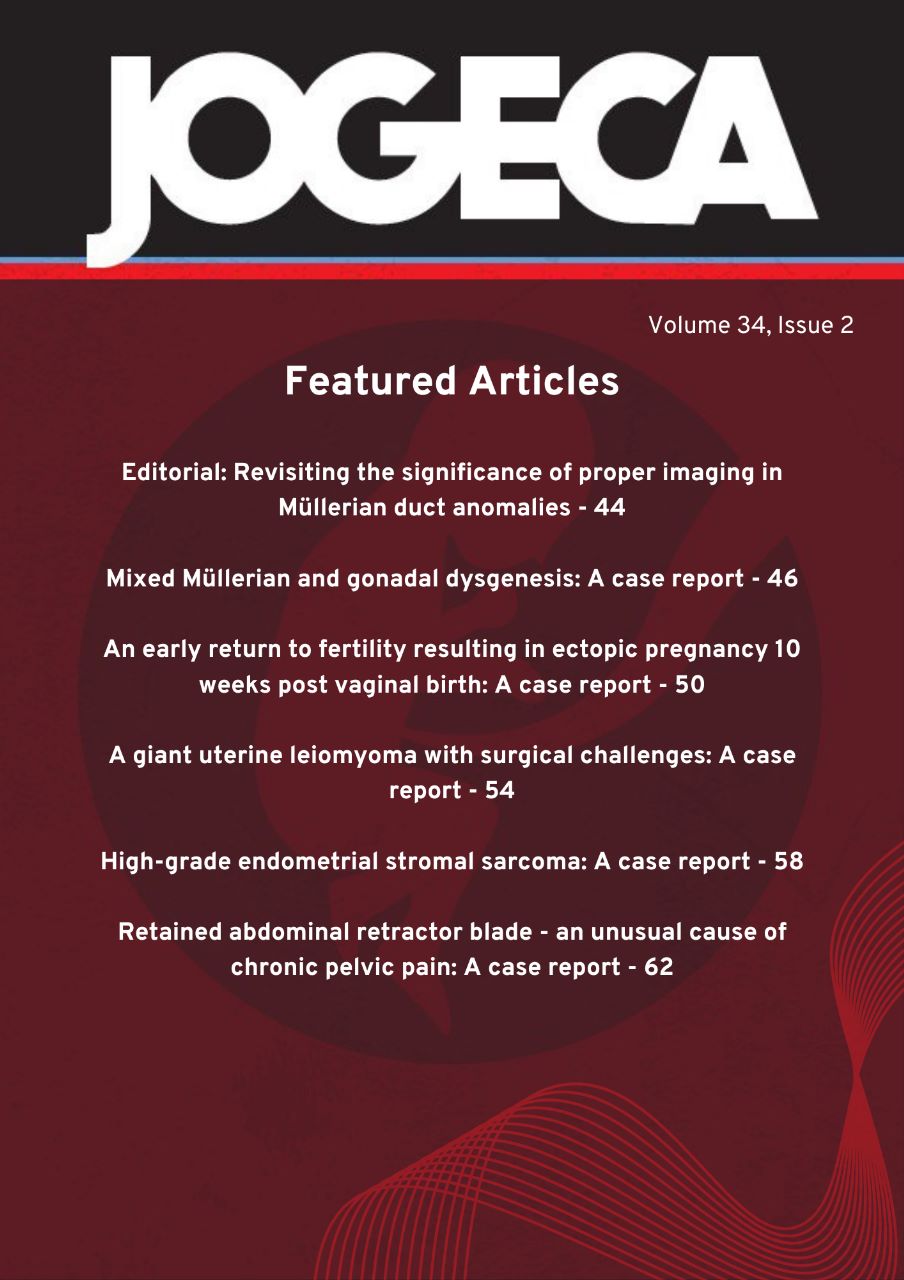Lipschutz ulcers – acute genital ulceration in a 17-year-old: A case report
DOI:
https://doi.org/10.59692/jogeca.v36i1.298Abstract
Background: The diagnosis of genital ulcers remains a challenge. Lipschutz ulcers are rare, painful, necrotic, and underdiagnosed lesions that are often found in nonsexually active adolescent females. The onset is acute and follows the prodromal phase of viral illness. Pathogenesis is unclear, but a hypersensitivity reaction to viral or bacterial infection leads to the deposition of an immune complex in the dermal vessels. The disease is self-limiting over two to six weeks.
Case presentation: A 17-year-old female presented to the Emergency Department at the Royal Children’s Hospital, Melbourne with painful genital ulcers for five days and acute urinary retention for two days. This was preceded by a flu-like illness a week prior with associated body heat and polyarthralgia. The patient denied any history of sexual activity. There was no relevant medical history, no use of regular medication, and no history of trauma or sexual abuse. Perineal examination revealed “kissing” vulval lesions, 1 cm each, on the lower aspect of the labia majora. The lesions were symmetric with an erythematous border and a necrotic base. Sexually transmitted illness screening and her autoimmune profile were negative. Epstein-Barr virus IgG was positive and inflammatory markers were mildly elevated. Genital culture reported mixed anaerobes. The patient was catheterized, and administered local and systemic analgesia, steroid cream, and oral antibiotics. Wound care was instituted three times a day. She was discharged home after five days to complete medication once she was pain-free and able to pass urine.
Conclusion: The diagnosis of Lipschutz ulcer is an exclusion and other causes of genital ulceration such as genital herpes, sexually transmitted infections, and autoimmune diseases must first be ruled out. Healing without scarring is spontaneous, and management involves wound care, local and systemic analgesia, local corticosteroids, and antibiotics if there is evidence of secondary infection.
Downloads
Published
How to Cite
Issue
Section
Categories
License
Copyright (c) 2024 The Authors.

This work is licensed under a Creative Commons Attribution 4.0 International License.




